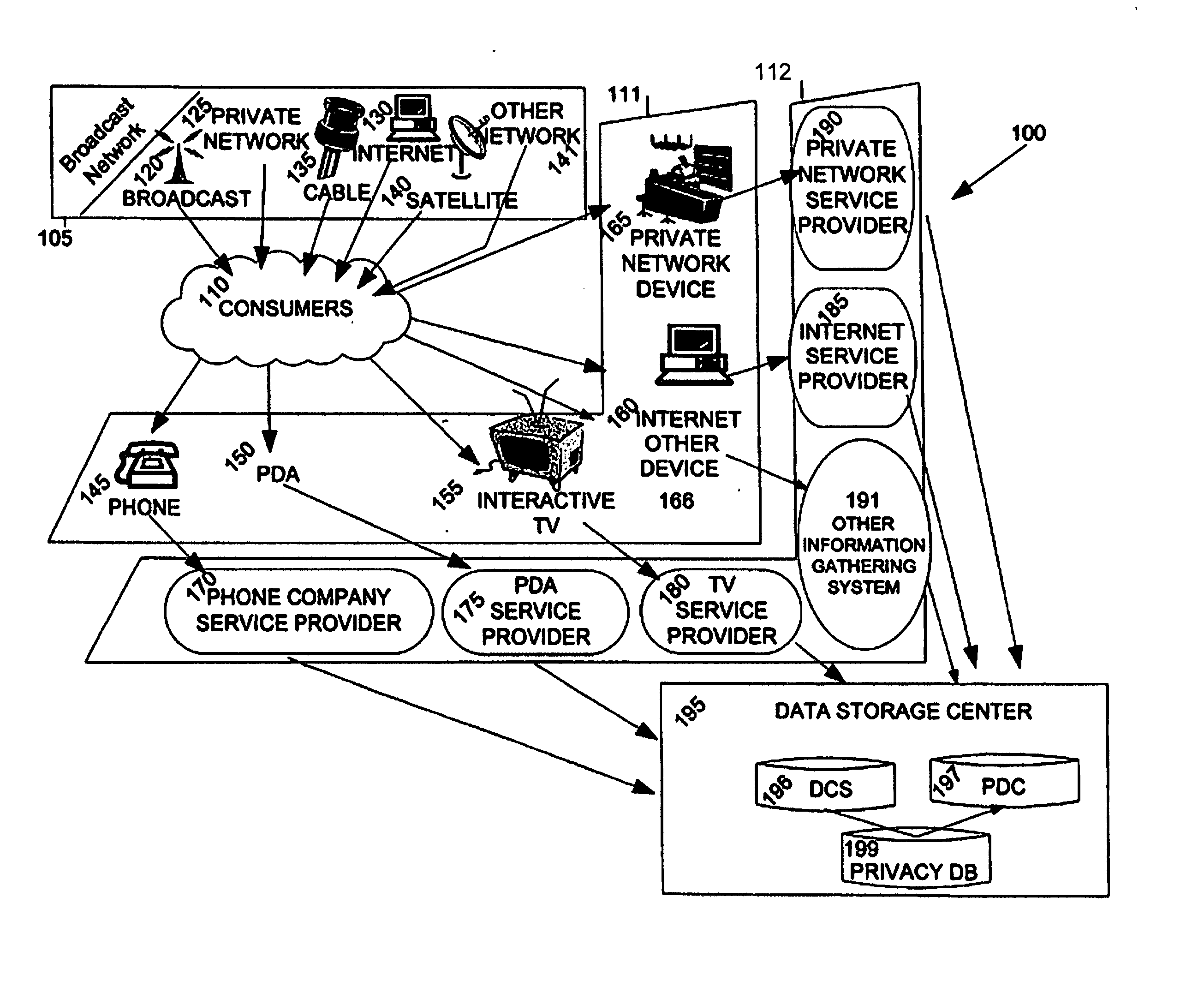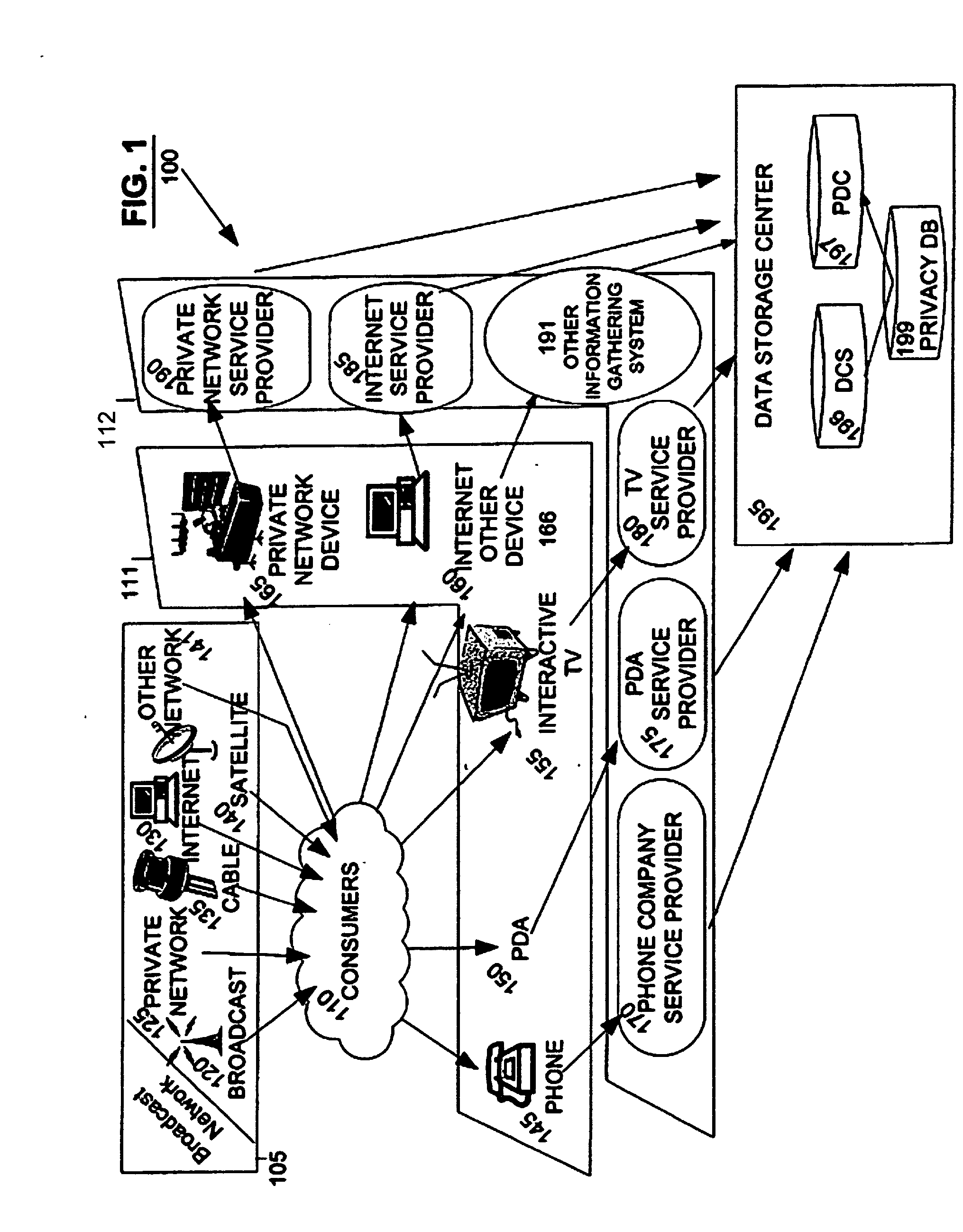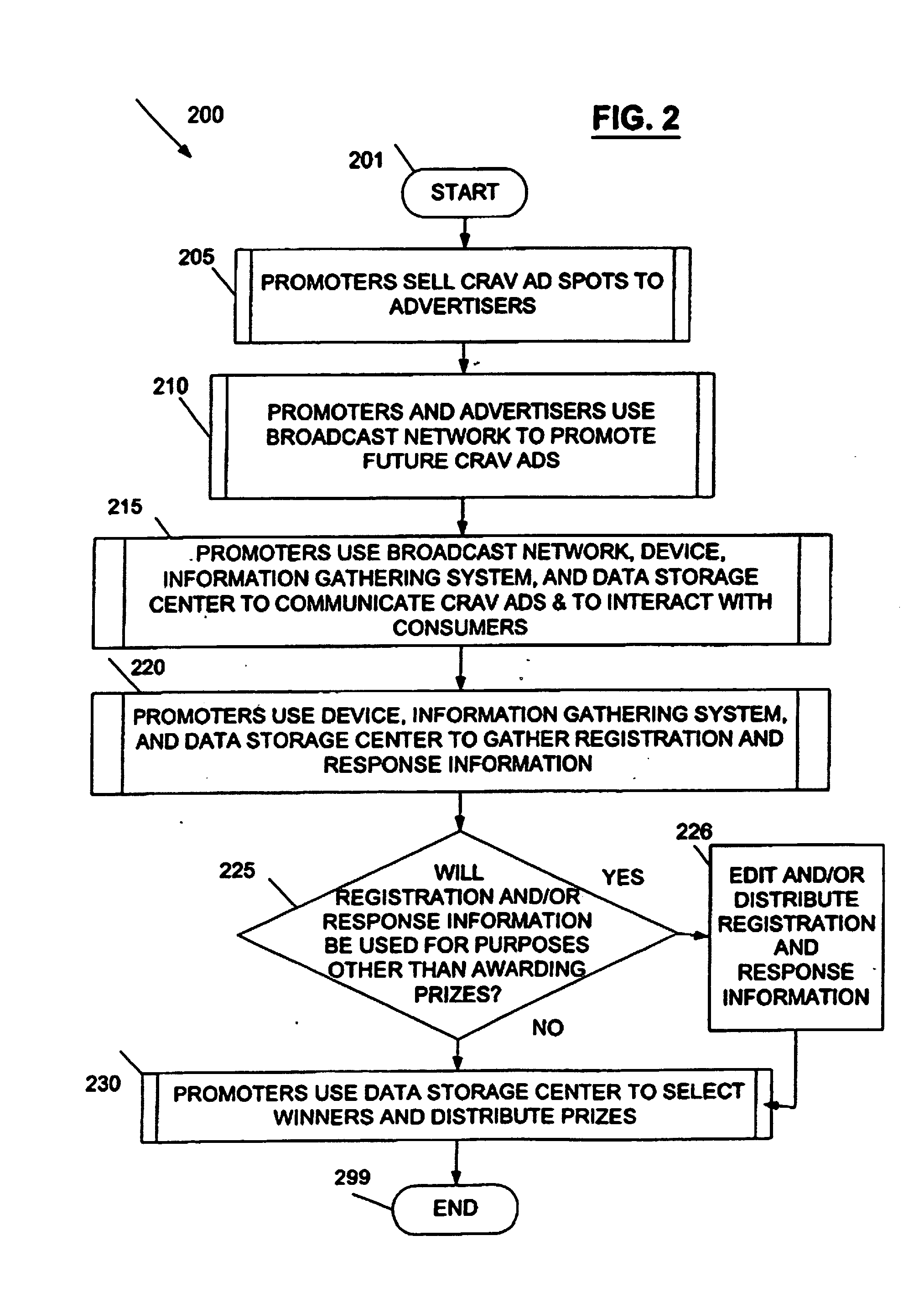As a result, the Advertisers have more difficulty reaching
mass numbers of the consumers.
In addition, the Promoters have more difficulty guaranteeing that many of the consumers will watch, hear, read, or otherwise absorb or become exposed to the entertainment content and the ads.
This phenomenon has led to lower advertising fees and lower profits for the Promoters.
However, the consumers typically ignore or avoid the ads.
While remote controls with capabilities for tuning one or more electronic appliances are widely available, hand-held devices that can facilitate interaction between readers and printed media are less common.
Such hand-held devices are often limited to providing low-level textual interaction, for example reading printed words via
optical character recognition (“OCR”).
As a result, the effectiveness of
mass media advertising has been questioned.
This array of alternatives causes complexities in conventional methods for estimating audiences.
The access controls of such private networks can limit accurately estimating and characterizing an audience for a specific content segment.
One drawback of this arrangement is that sending the channel selection upstream on the broadcast distribution network typically requires a
content distribution network that is bidirectional, and many
content distribution networks are unidirectional or lack sufficient upstream bandwidth.
Another potential issue with characterizing an audience based on information from a
set top box is that the
set top box resides on the
content distribution network and consequently might not be independent from the business entities involved in content distribution.
Since the results of the audience characterization could financially
impact those business entities, their motivation to conduct an unbiased
estimation of the audience might conflict with their financial motivations.
These consumers often have busy lifestyles that leave little time for tracking or managing a household's stock of products, for example to replenish depletable items.
Thus, impromptu purchases and unstructured management of a household's inventory of products can lead to consumers acquiring products of undesirable brands at high prices.
For a manufacturer or
promoter of a brand that the
consumer prefers or should prefer, unmanaged or unplanned product purchases can result in lost sales when the
consumer purchases a competitive product.
While live broadcast television programs generally provide a vehicle through which a
consumer can obtain dynamic information about sales or inventory of a featured product, the audience often has limited flexibility to select viewing times. With conventional broadcast technology, viewers frequently need to schedule viewing activities to coincide with time slots in a broadcast schedule.
While VOD networks afford users schedule flexibility for viewing entertainment, conventional VOD technology generally provides limited or insufficient capabilities to adequately support home shopping.
As discussed above, programs that offer products for sale to consumers should preferentially have a capability to present dynamic information related to sales volume or product inventory, and conventional VOD programs do not support that capability.
That is, although conventional VOD technology supports presenting a viewer with prerecorded content in response to a viewer request, that conventional technology lacks a capability to respond to sales events or a capability to integrate
programming that offers products for sale with dynamic inventory or sales information.
Thus,
inventory management issues, such as having sufficient product available to meet sales demands, often preclude selling products over a communication network using prerecorded sales content.
The constraint of airing home shopping segments live often limits the amount of resources that a “shopping network” business can invest in creating and producing home shopping programs.
Since conventional home shopping programs are not readily recorded and rebroadcast, each program needs to achieve profitability through a single broadcast.
Accordingly, the shopping network usually can not afford to pay celebrities to routinely appear on live broadcasts.
Because a conventional home shopping program has limited or no
shelf life, a producer's investment in on-air talent essentially expires with the airing of the program.
Another problem that impedes shopping networks from vending products using on-demand access to prerecorded sales content is the organization of that content.
Consumers are accustomed to
purchasing by product type or by department, and existing technology for delivering on-demand videos fails to satisfactorily organize shopping content.
However, since on-demand content is somewhat unscheduled, conventional methods for organizing live home shopping programs on a time basis do not readily apply to on-demand shopping programs.
Conventional systems for organizing video content or home shopping programs are not well tailored to emulating the shopping experience that traditional shopping malls provide.
In contrast to that attraction, conventional VOD technology fails to offer a viewer with a desirable level of interaction with on-demand content.
Using conventional technology, the entity that produced or distributed the on-demand content cannot easily capture the viewer's interest, motivate the viewer to remember a message, or stimulate the viewer to make a purchase or take some other action.
Whether a consumer receives content from a VOD network or a broadcast network, the closed nature of most conventional content distribution systems often limits the consumer's viewing options.
To consume the entertainment content, the consumer is left with few options beyond tolerating the advertising content that the network carries or manually changing the channel after an unwanted advertisement appears.
While the content control of conventional content distribution systems may benefit the content
distributor and those exclusive parties that have a
financial interest in the advertising content distributed thereon, the consumer typically dislikes and does not benefit from content control.
Moreover, the monopoly enjoyed by the content
distributor may artificially inflate the cost of presenting advertising content to the consumers, even by those selected parties that have been granted access to the closed content distribution network.
 Login to View More
Login to View More  Login to View More
Login to View More 


